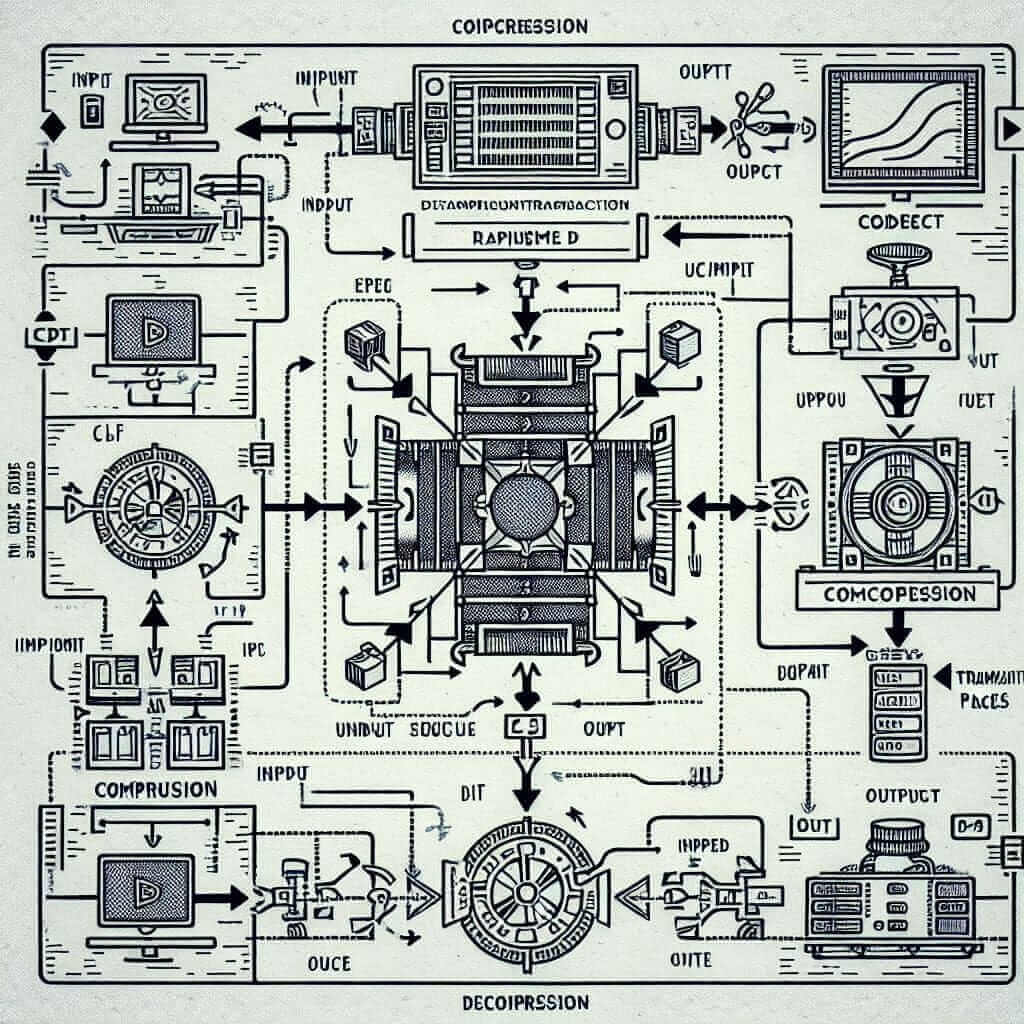The term “codec” might seem niche, but as technology becomes increasingly intertwined with our lives, it’s cropping up more frequently in IELTS materials. Whether you’re aiming for a band 7 or a band 9, understanding such vocabulary can significantly enhance your performance. This article will equip you with the knowledge to confidently tackle “codec” and related terms in your IELTS exam.
Understanding “Codec”
Pronunciation: /ˈkoʊdɛk/
Part of speech: Noun
Definition: A codec is a device or software that compresses and decompresses digital data, particularly audio and video files. This compression is essential for storing and transmitting large multimedia files efficiently.
Synonyms: Encoder/decoder, compressor/decompressor
Example:
- “Modern smartphones use advanced codecs to record high-definition videos without consuming excessive storage space.”
 Codec Illustration
Codec Illustration
“Codec” in the IELTS Exam
While “codec” itself might not be a central theme in IELTS questions, it’s highly likely to appear in listening sections featuring discussions about technology, media, or telecommunications. You might encounter it in reading passages about streaming services, video conferencing, or data compression techniques.
Applying “Codec” in Different IELTS Sections
Listening
Imagine a lecture about online video platforms. The speaker might say:
“The platform utilizes a codec that reduces file sizes significantly, enabling users with limited bandwidth to stream content seamlessly.”
Here, understanding “codec” helps you grasp the speaker’s explanation of how the platform optimizes streaming for users with varying internet speeds.
Reading
You might come across “codec” in a passage about the evolution of video technology:
“The introduction of efficient codecs revolutionized the way we consume video content. Suddenly, downloading a movie became a matter of minutes, not hours.”
Understanding the role of codecs helps you understand the significance of this technological advancement.
Writing Task 2
While less likely to be a central theme, you could use “codec” in an essay discussing the impact of technology on communication:
“Advancements in codec technology have facilitated real-time video communication, bridging geographical distances and transforming personal and professional interactions.”
Expanding Your Vocabulary: Related Terms
- Compression: The process of reducing the size of a file.
- Bandwidth: The amount of data that can be transmitted over a network connection in a given amount of time.
- Streaming: Playing audio or video content from the internet without downloading the entire file.
- Data transmission: The process of sending data from one point to another.
- Multimedia: Content that uses a combination of different content forms, such as text, audio, images, animation, video and interactive content.
Idioms and Phrases
While there aren’t specific idioms related to “codec,” you can use it in phrases to demonstrate a strong command of technical vocabulary:
- “Cutting-edge codec technology”: This emphasizes the use of the latest and most advanced codecs.
- “Efficient codec implementation”: This highlights the effective use of codecs for optimized performance.
Conclusion
Mastering vocabulary related to technology, like “codec,” can significantly boost your confidence and performance in the IELTS exam. Remember to practice using these terms in context and familiarize yourself with related vocabulary to excel in all sections of the test. As you continue your IELTS preparation, delve deeper into the world of technology-related vocabulary to broaden your lexical range and achieve your desired band score.

